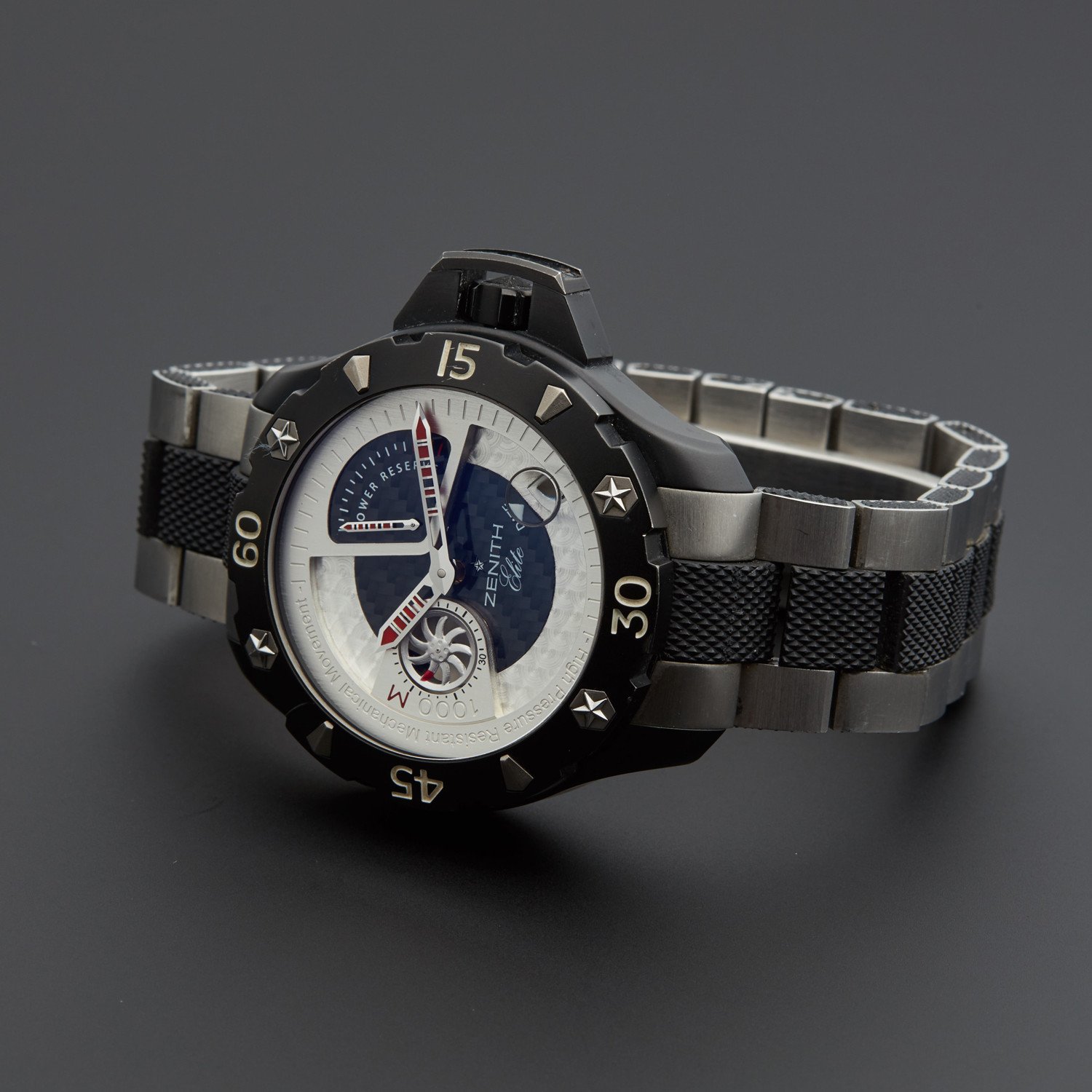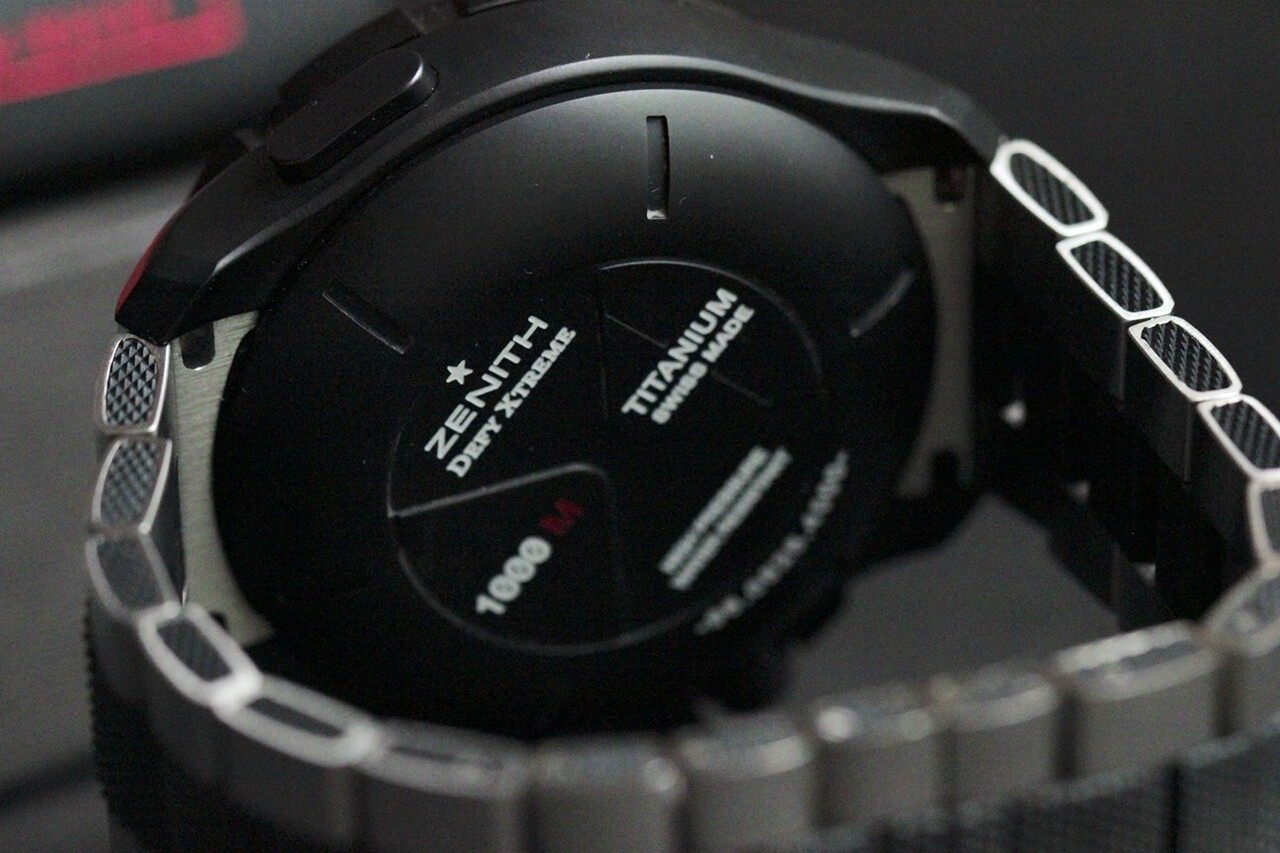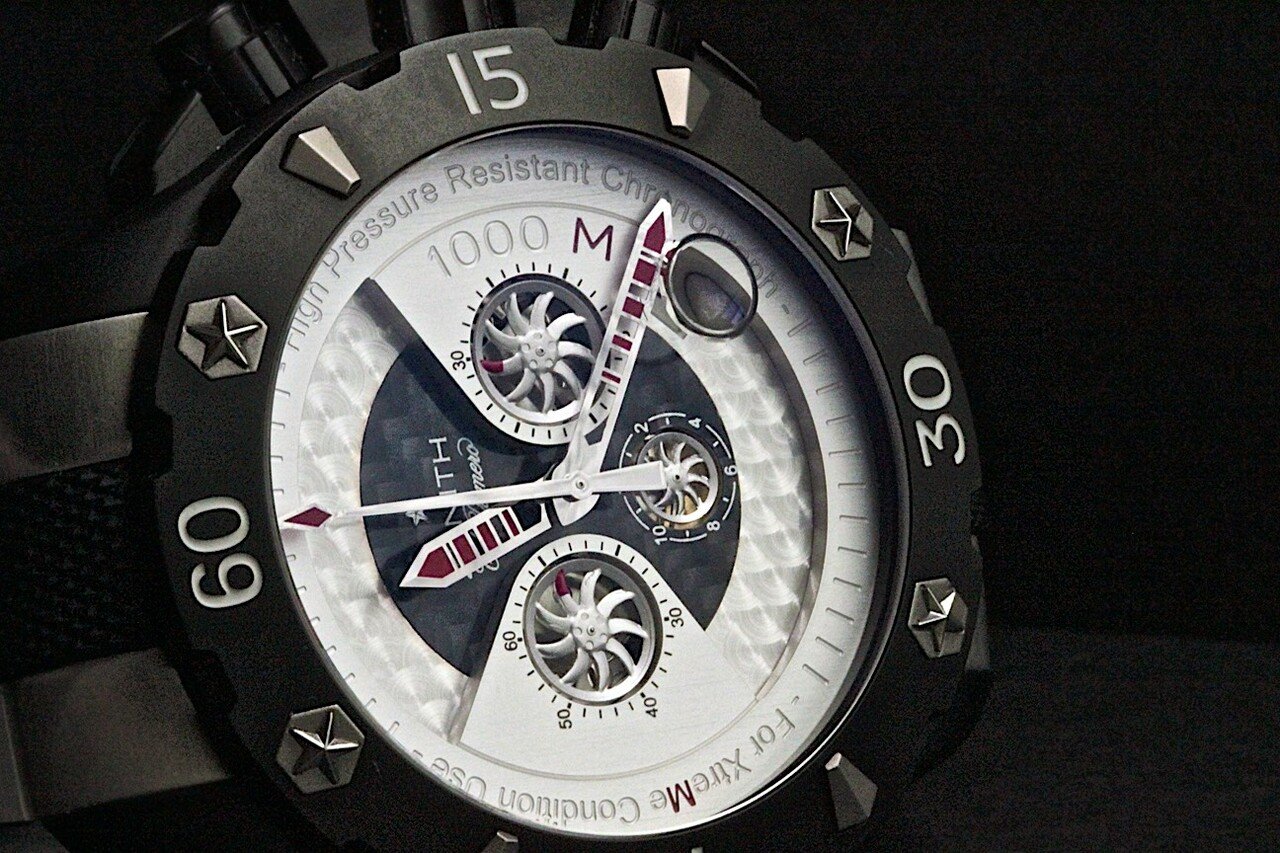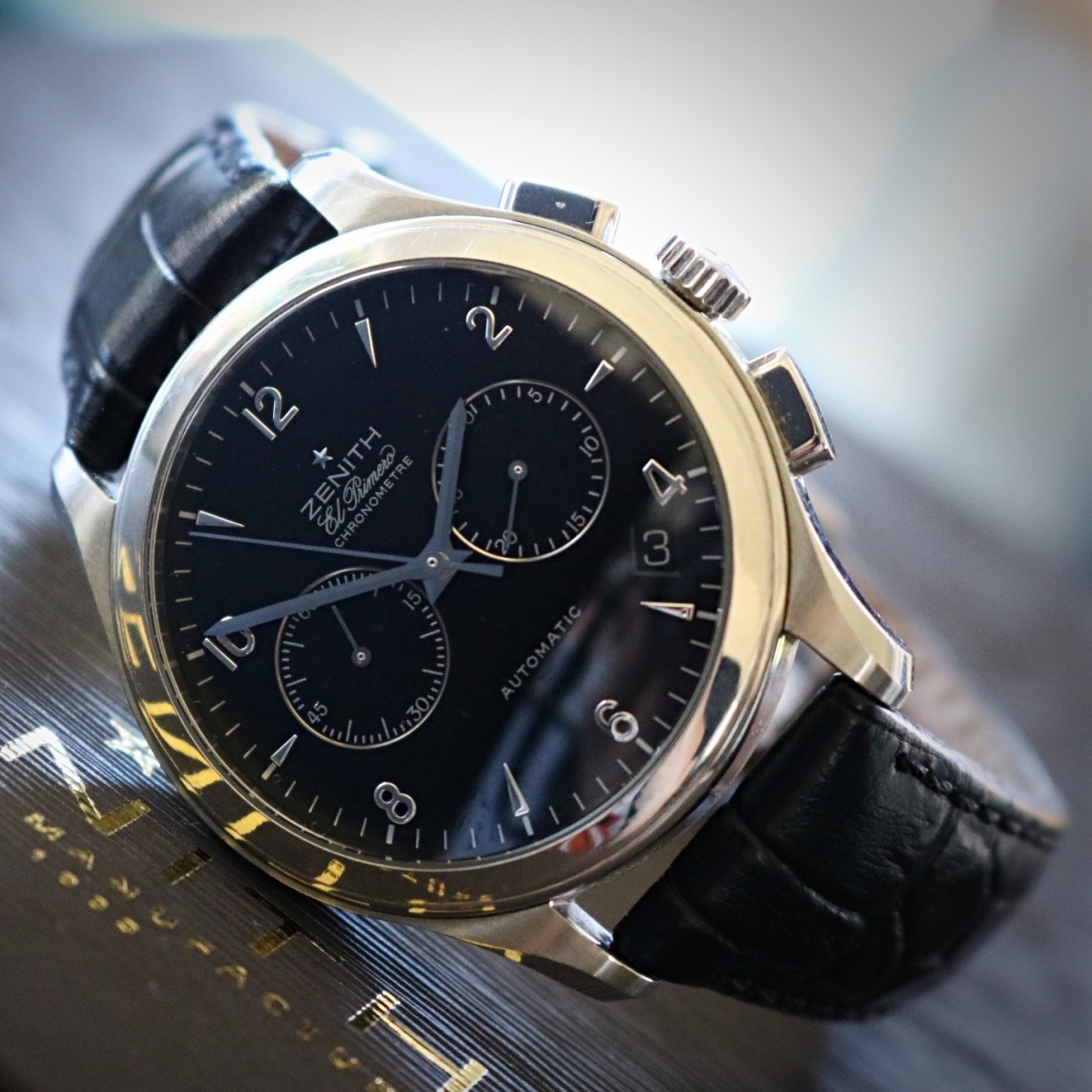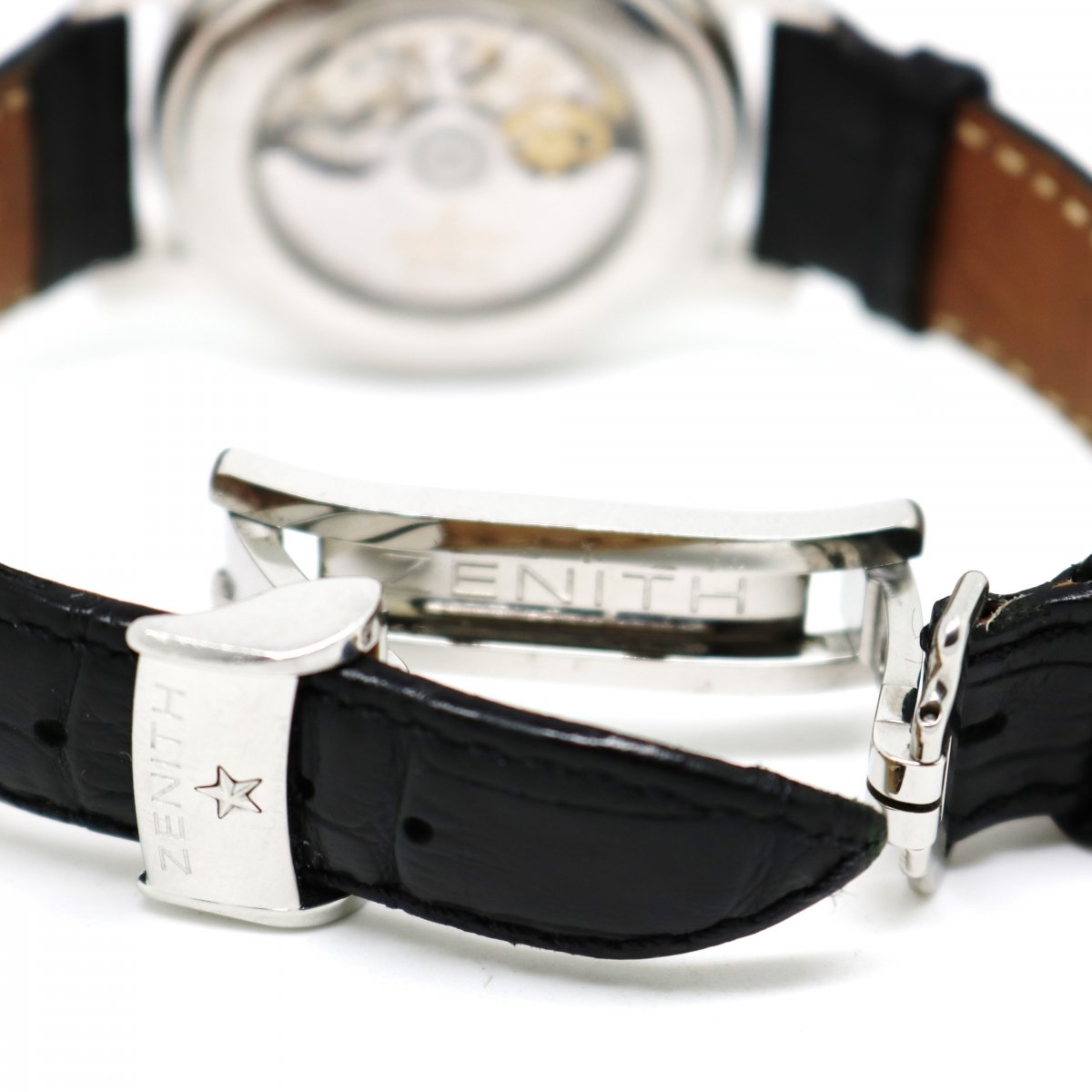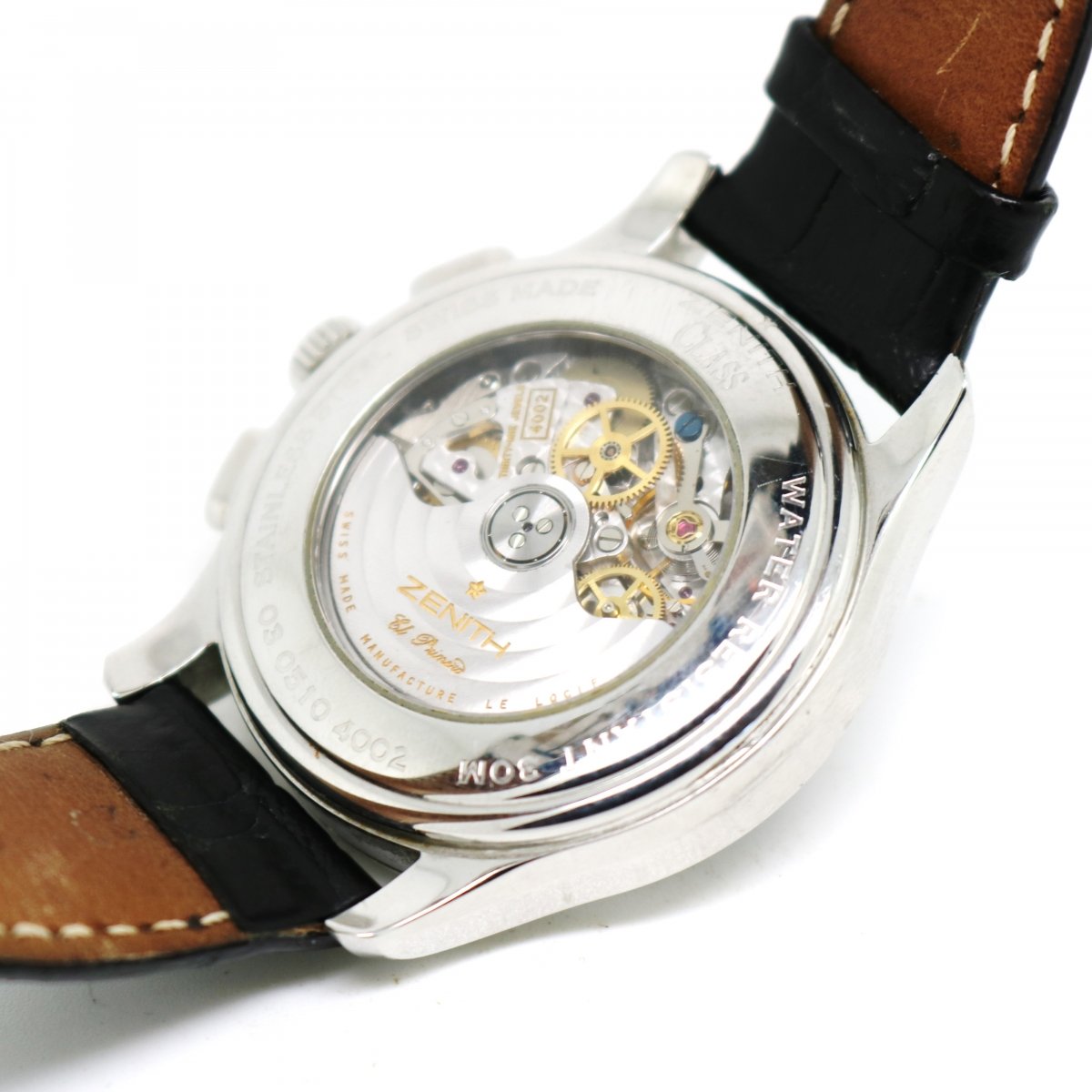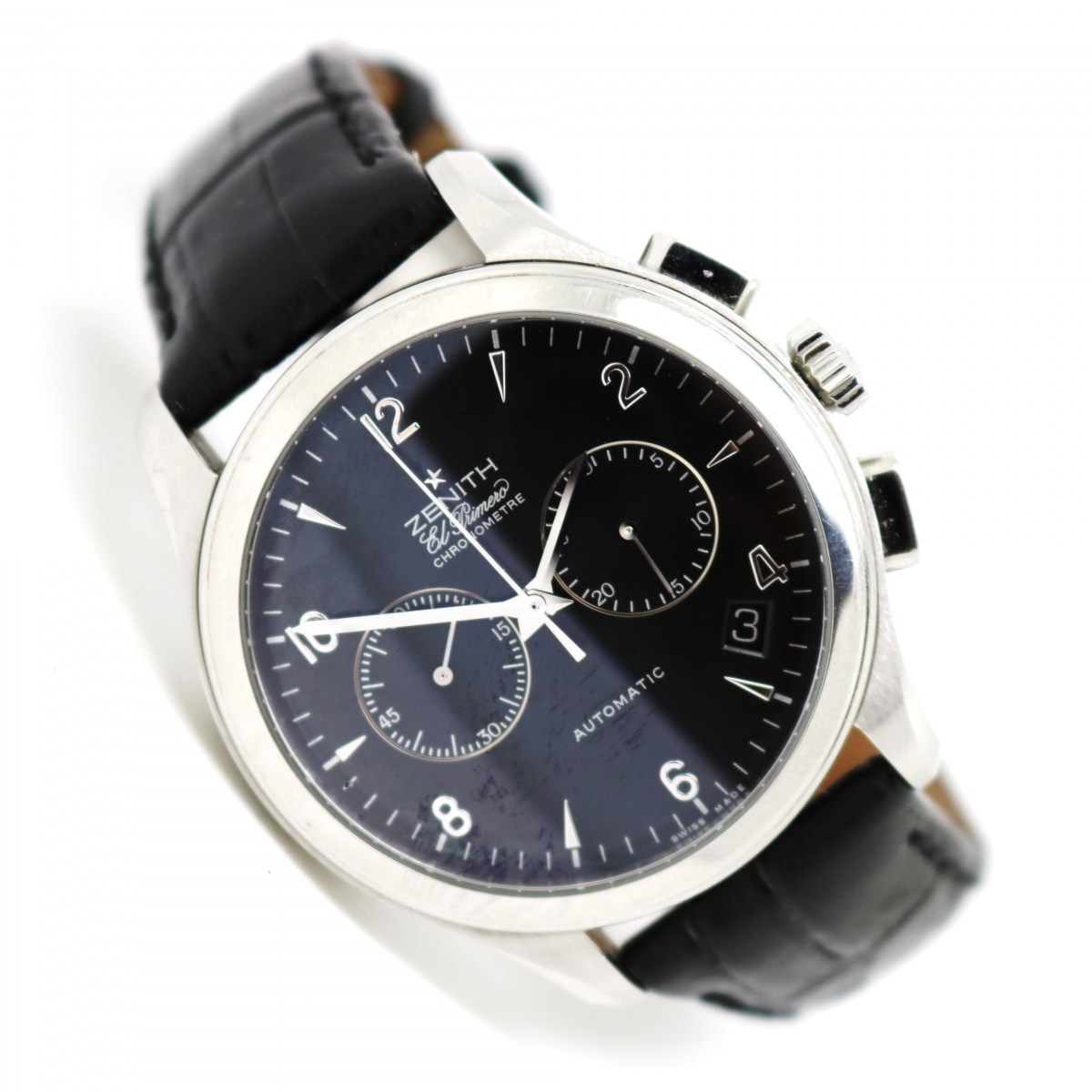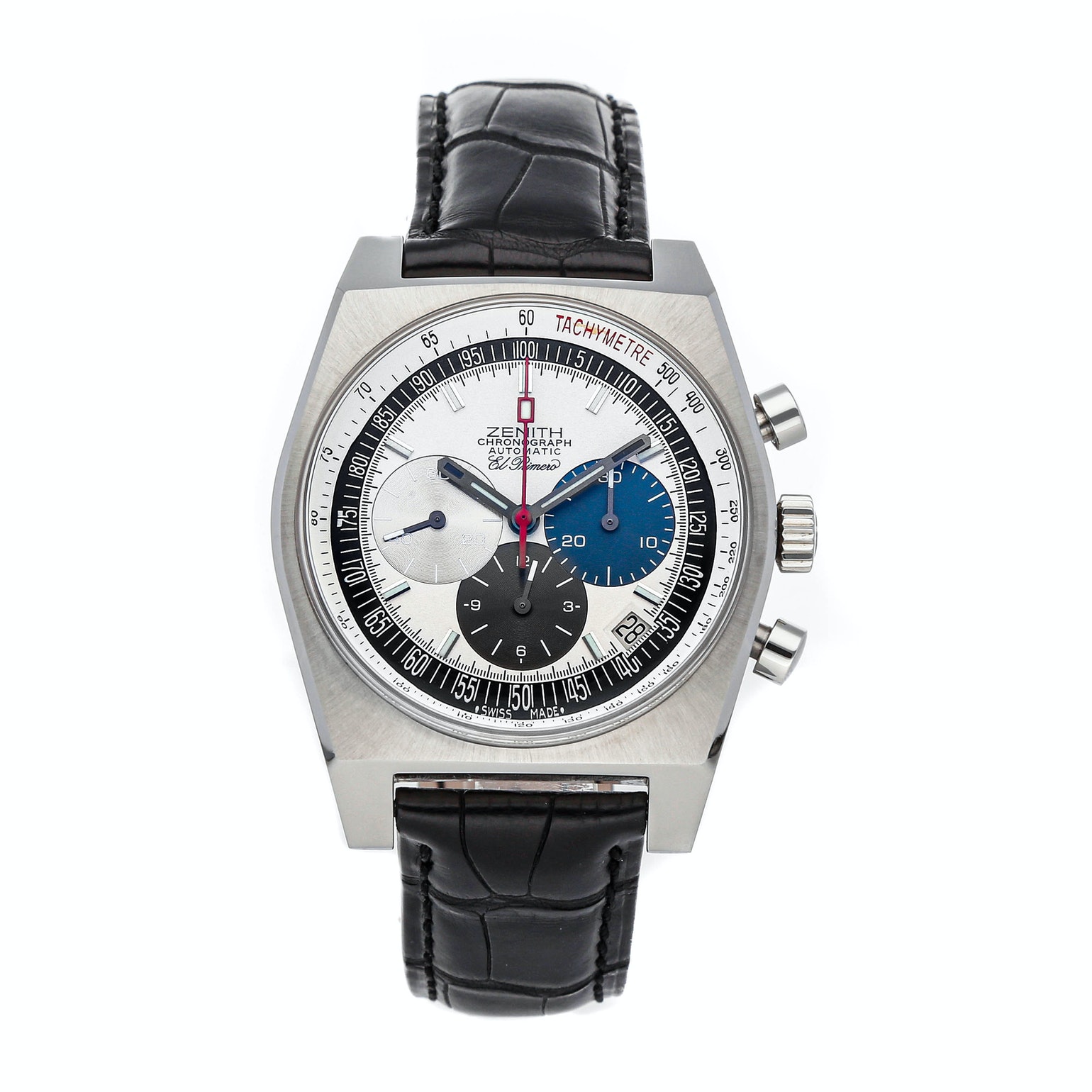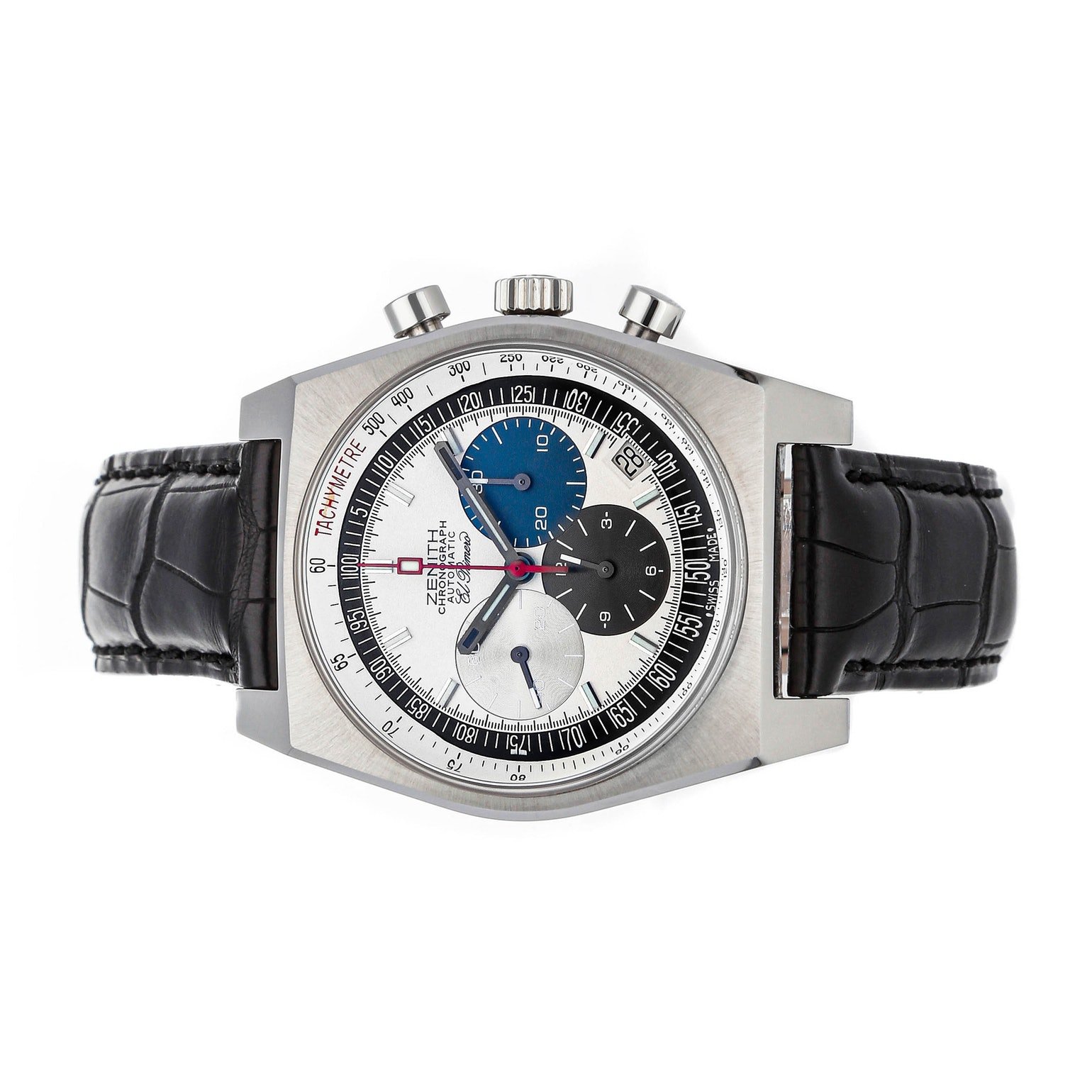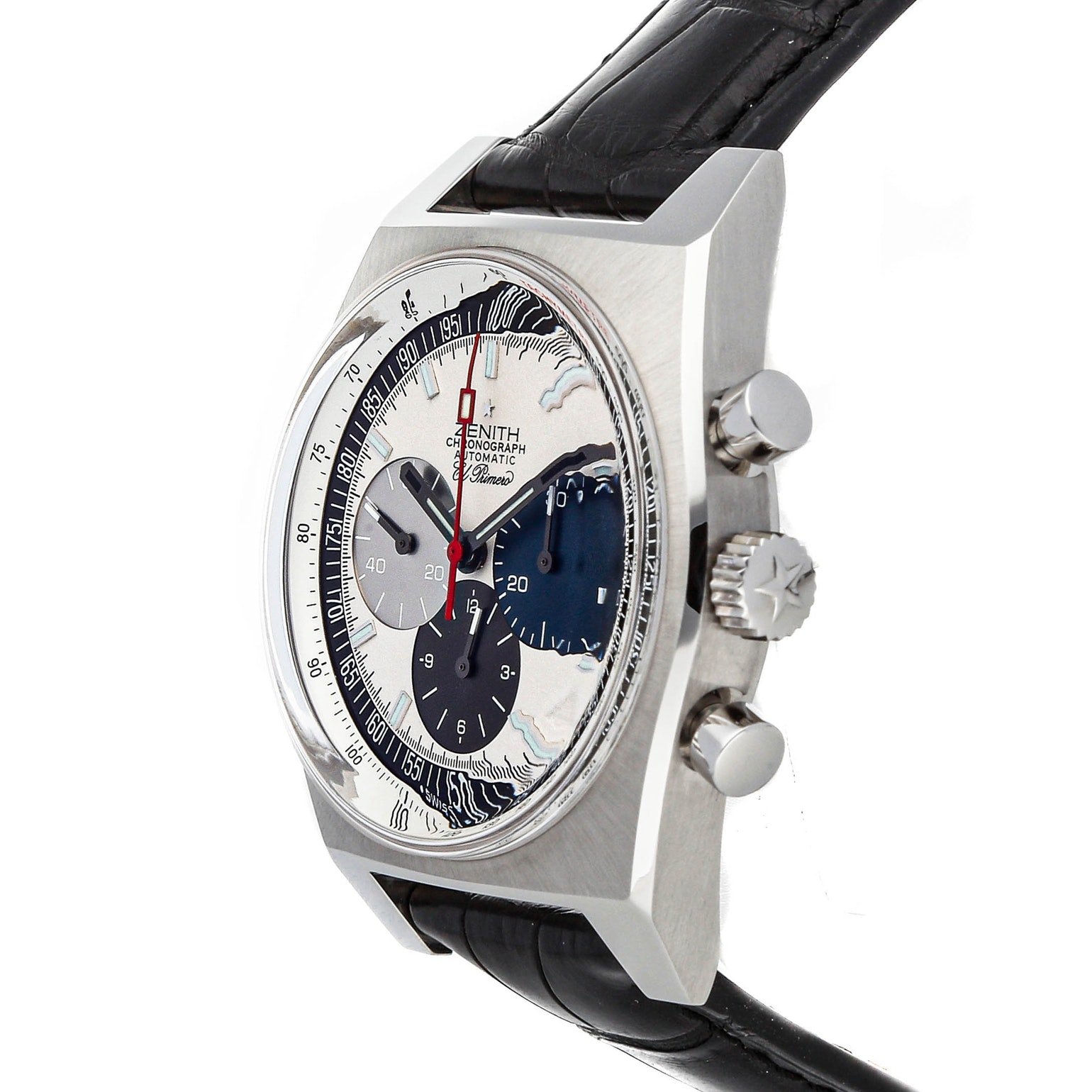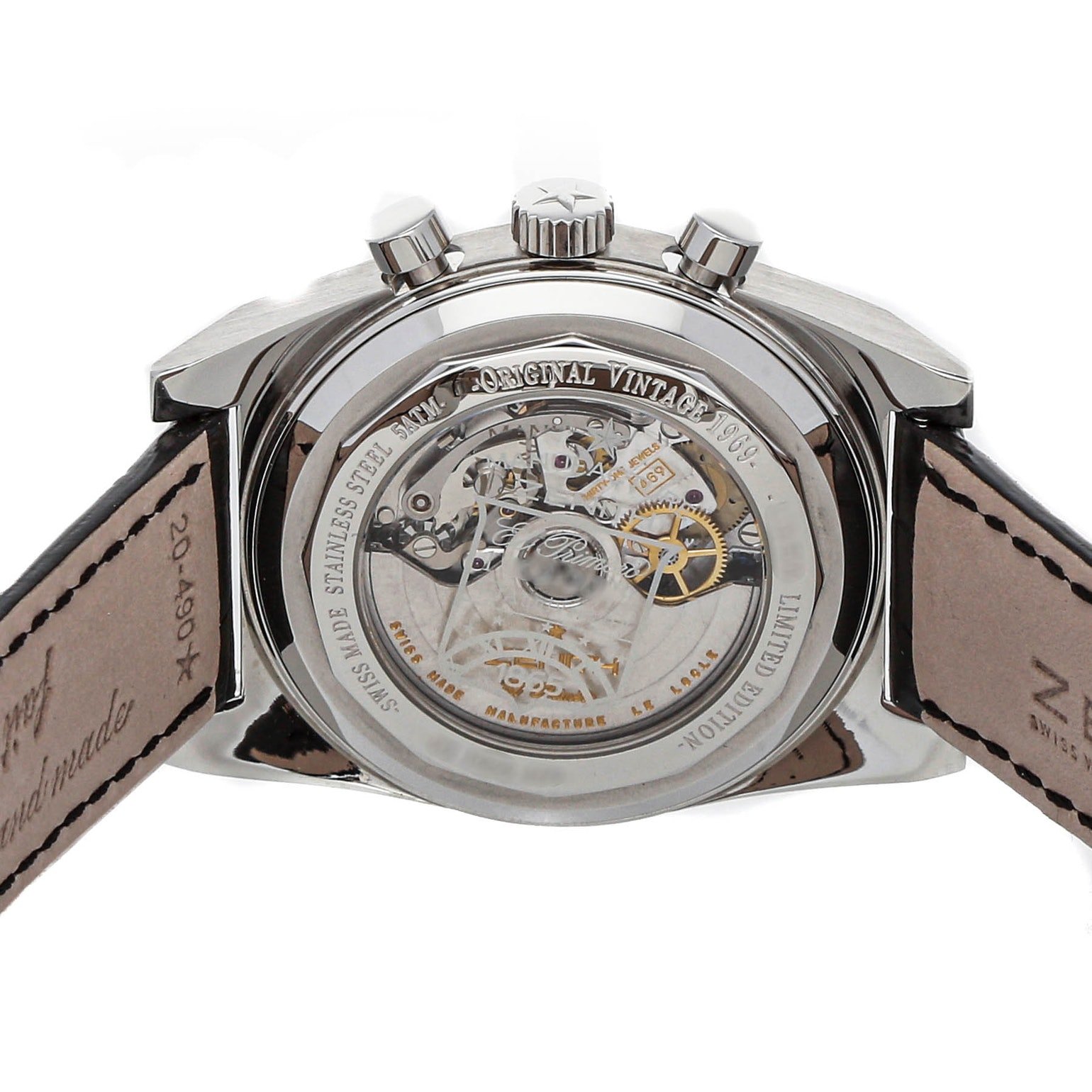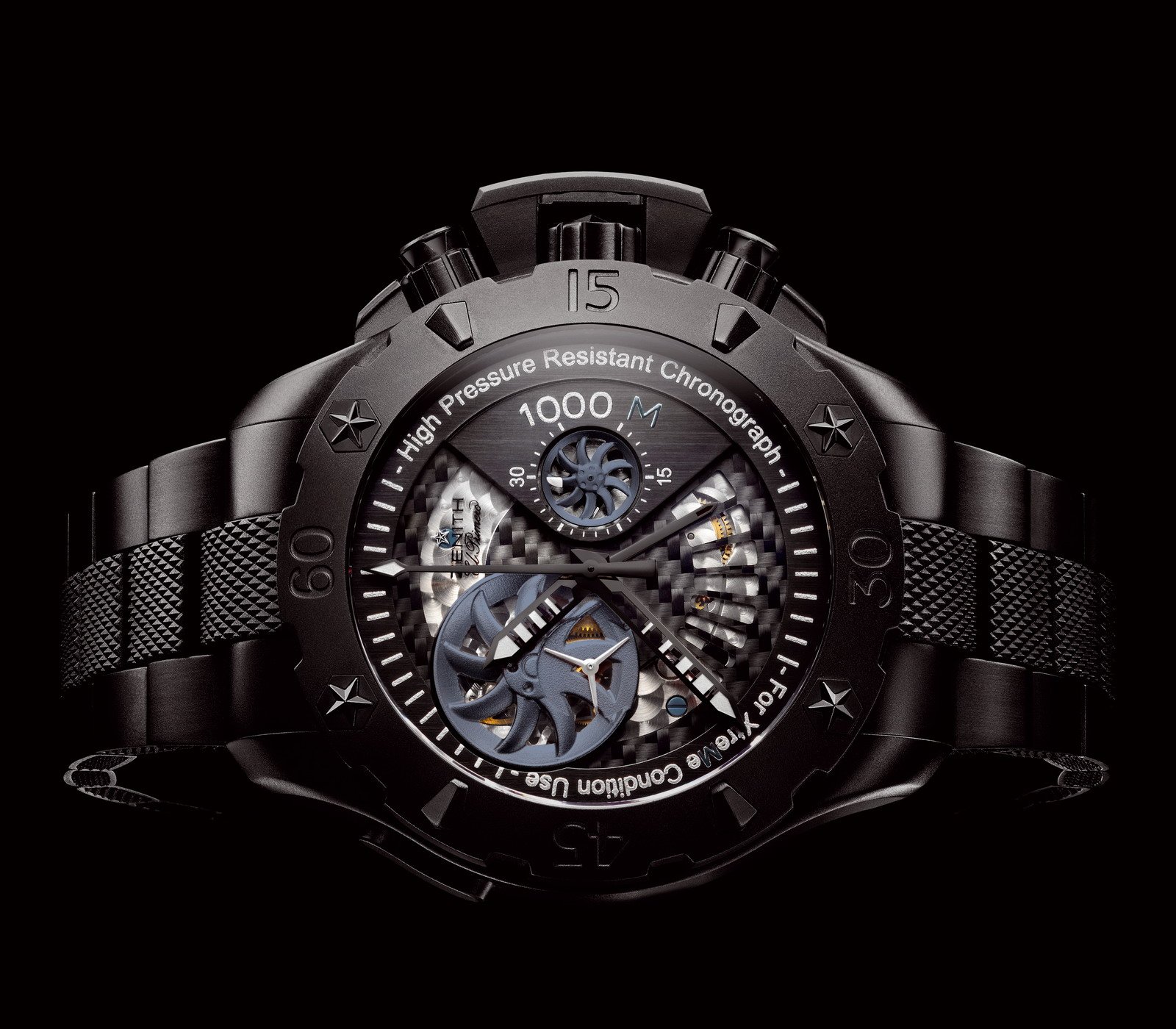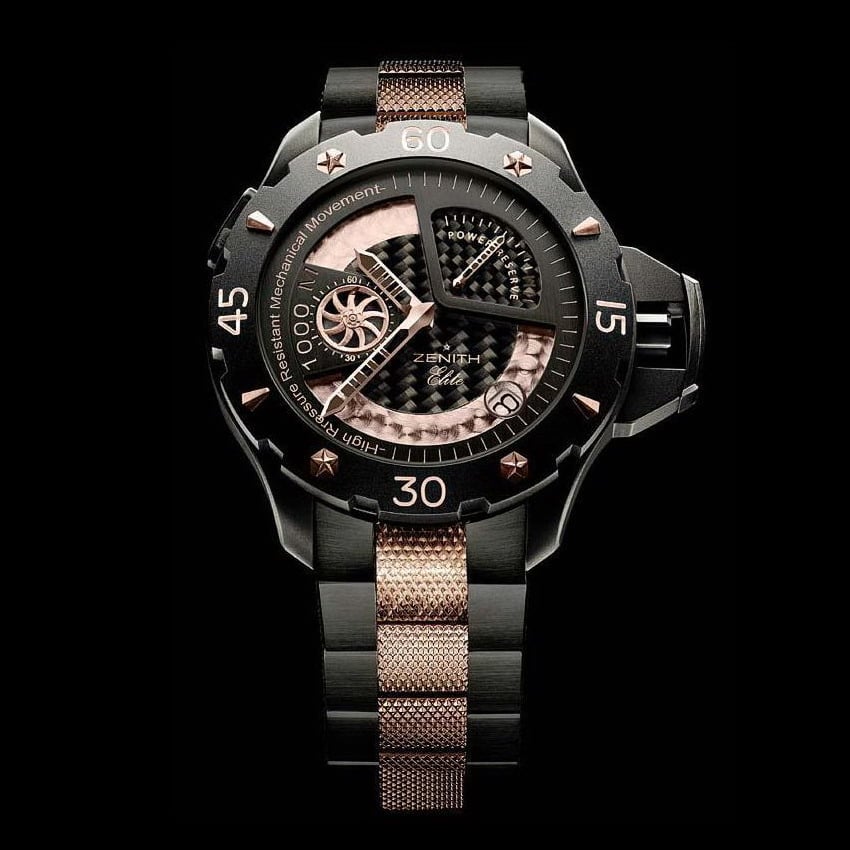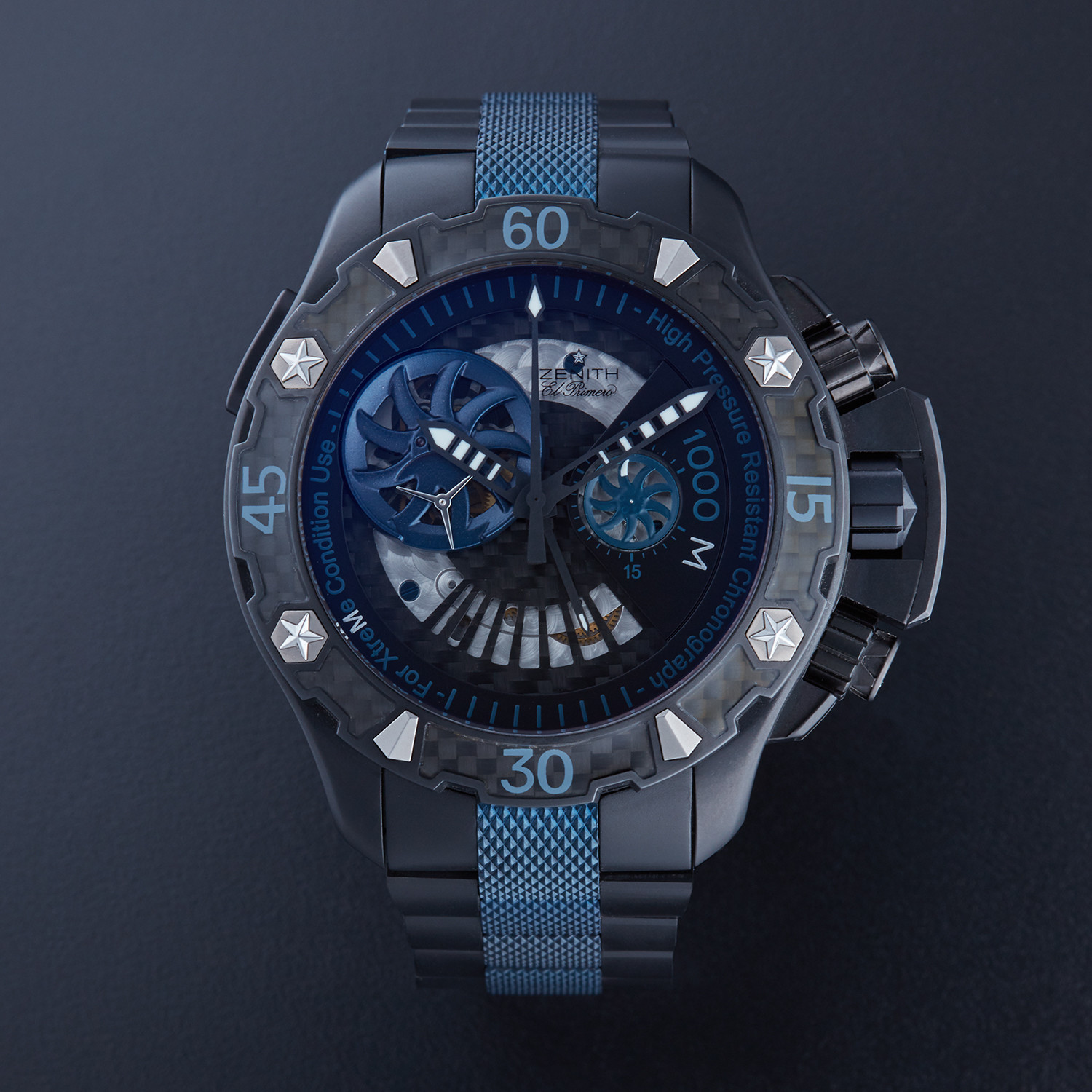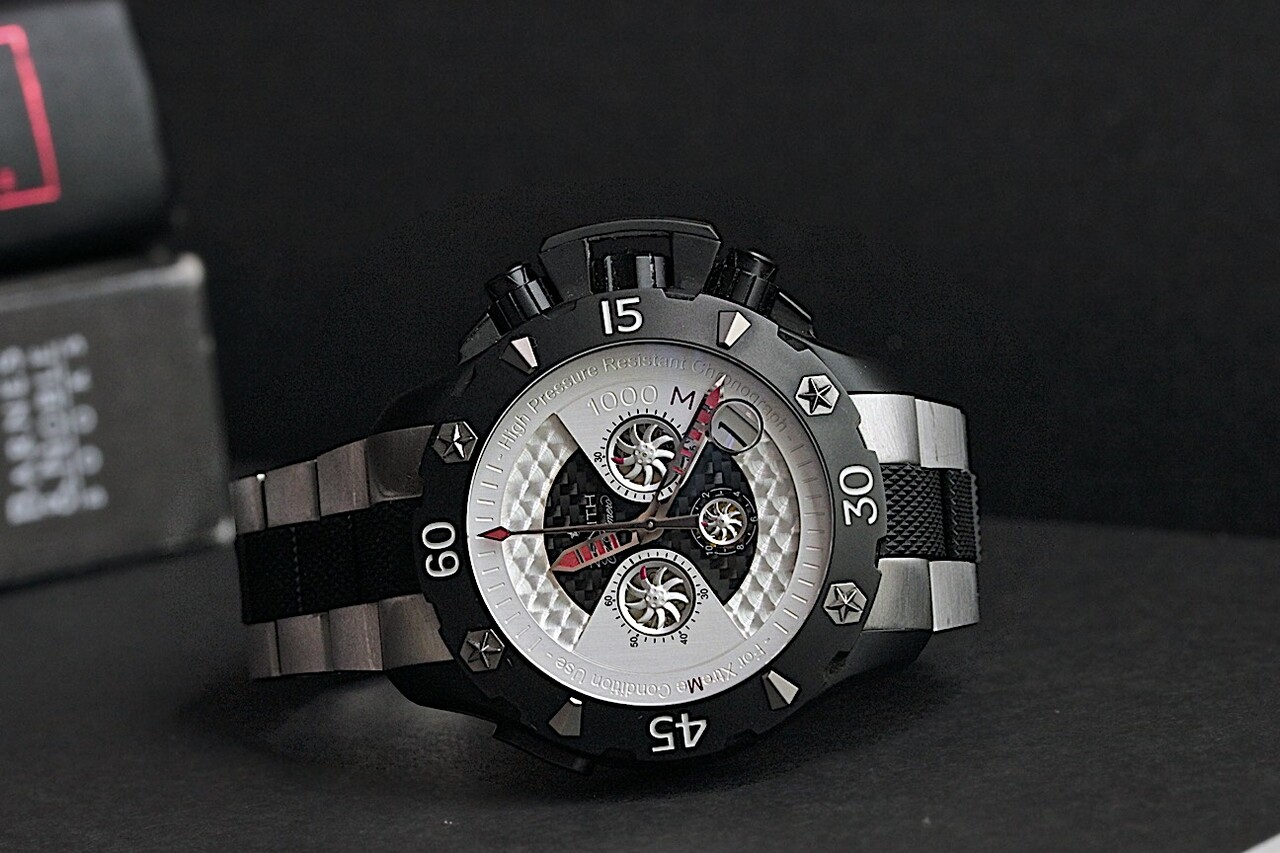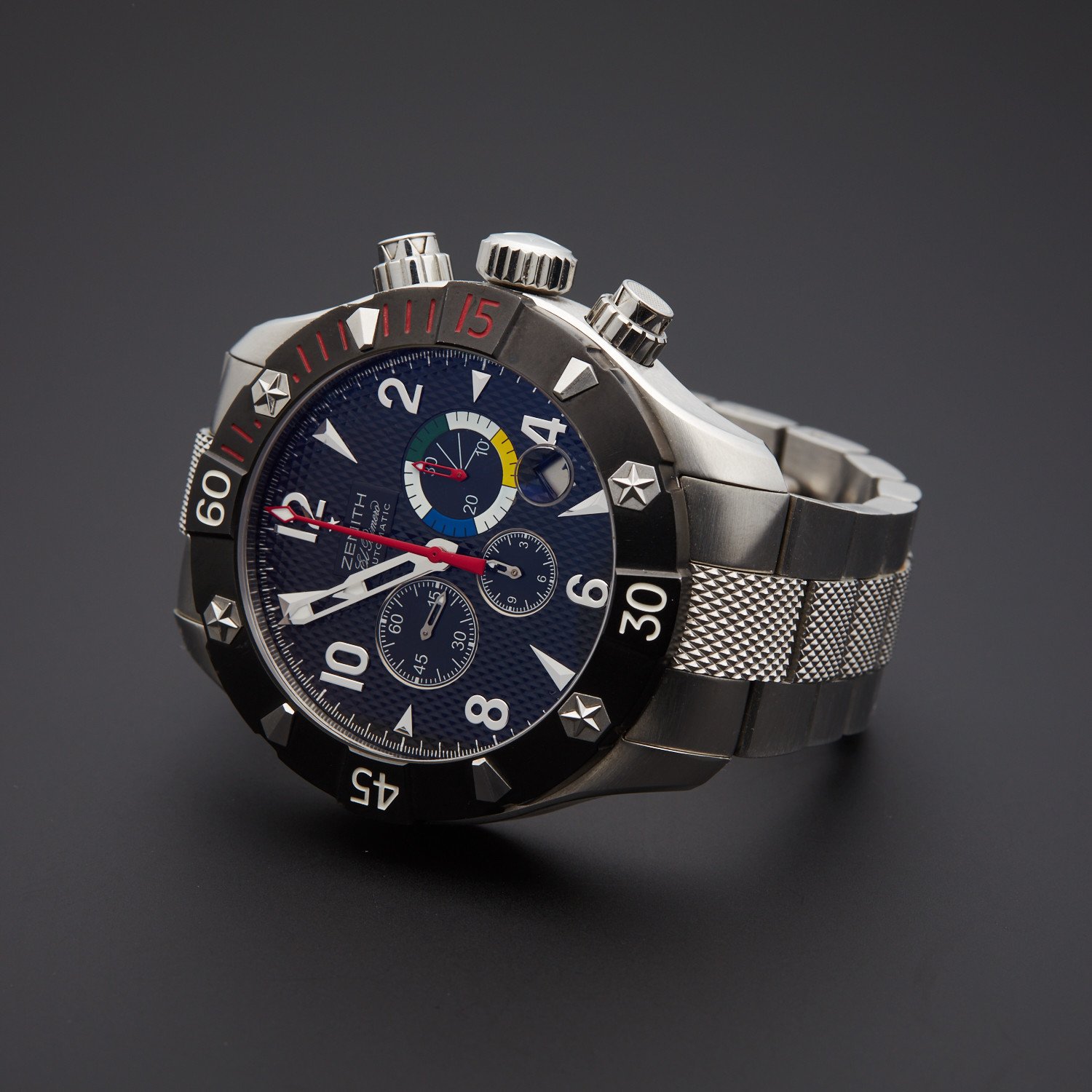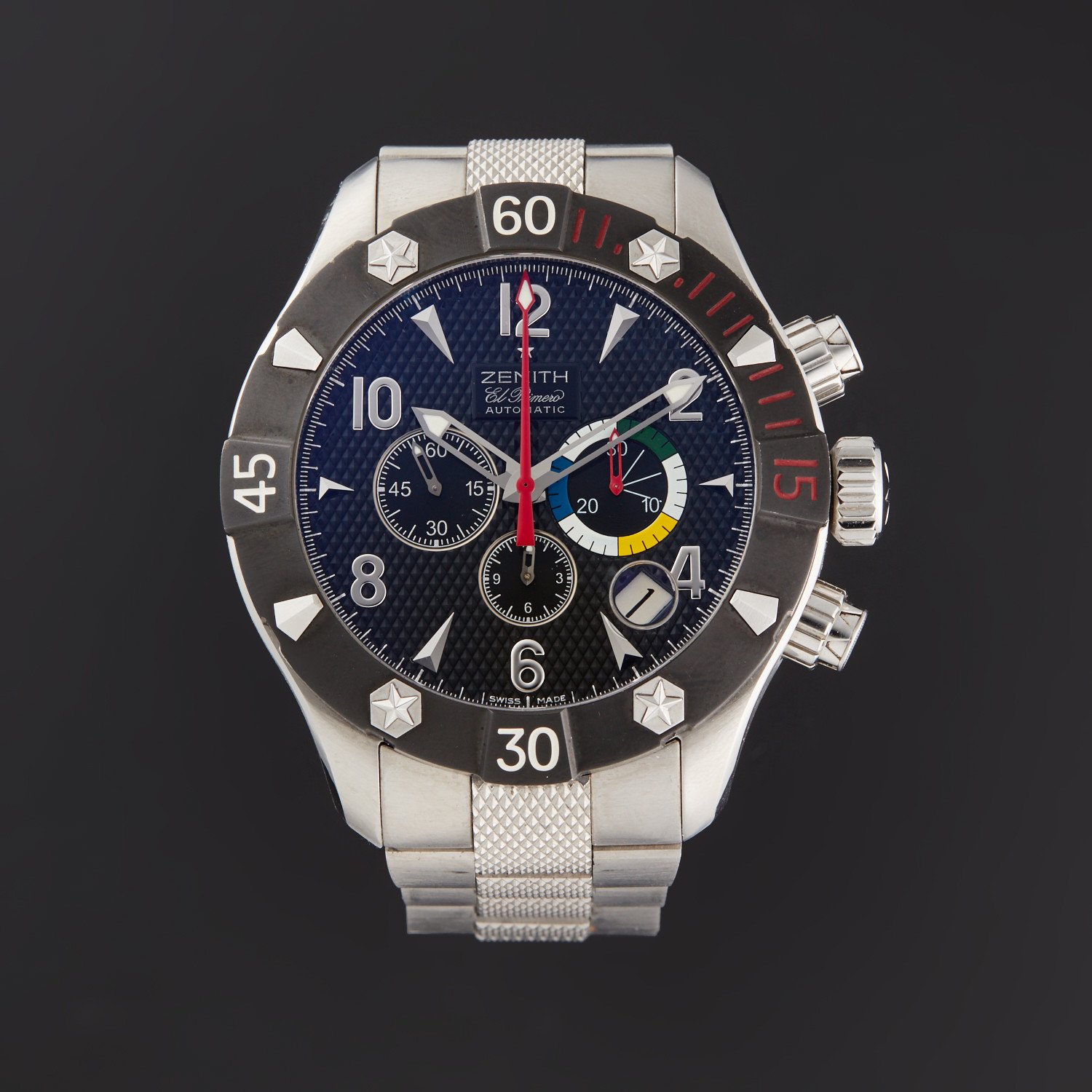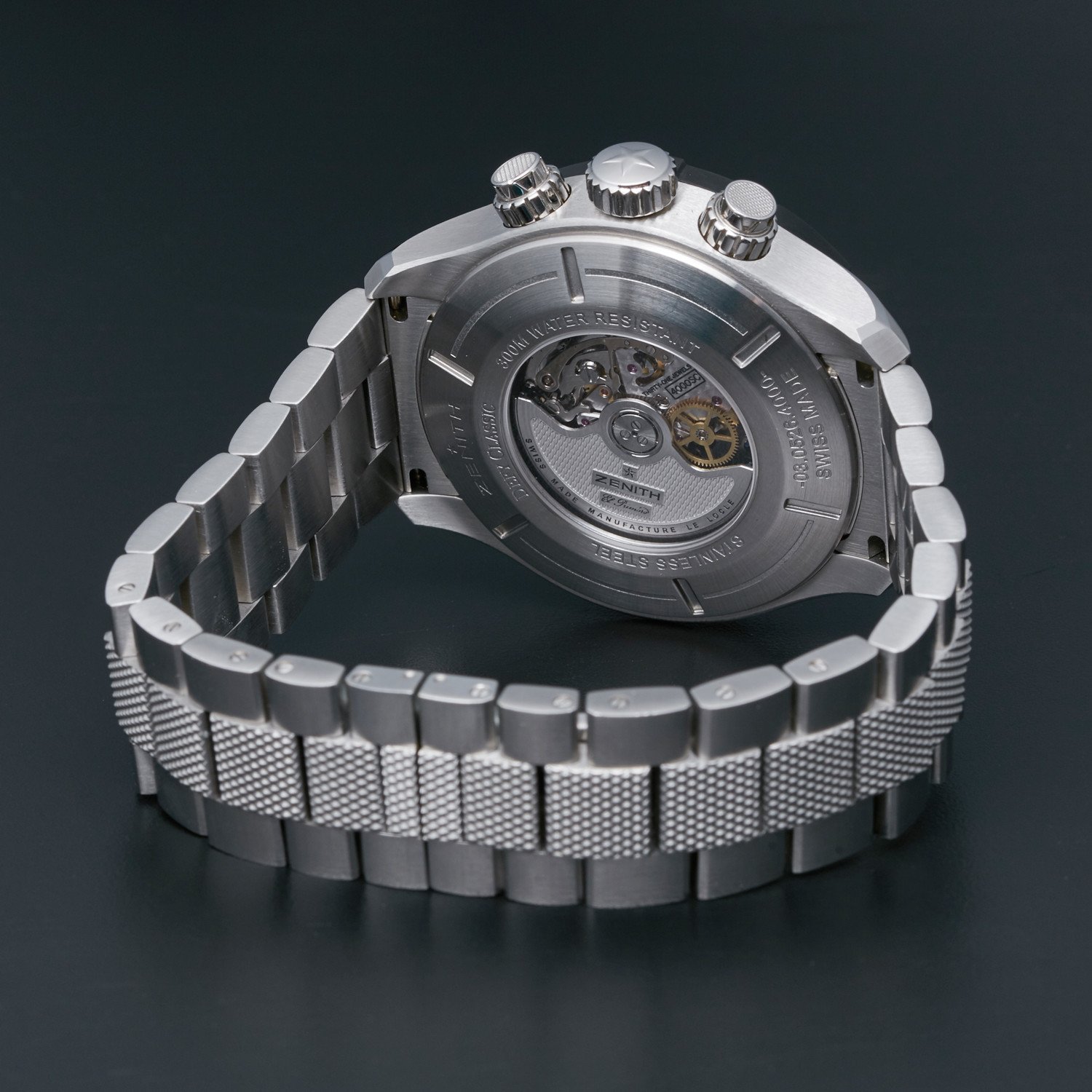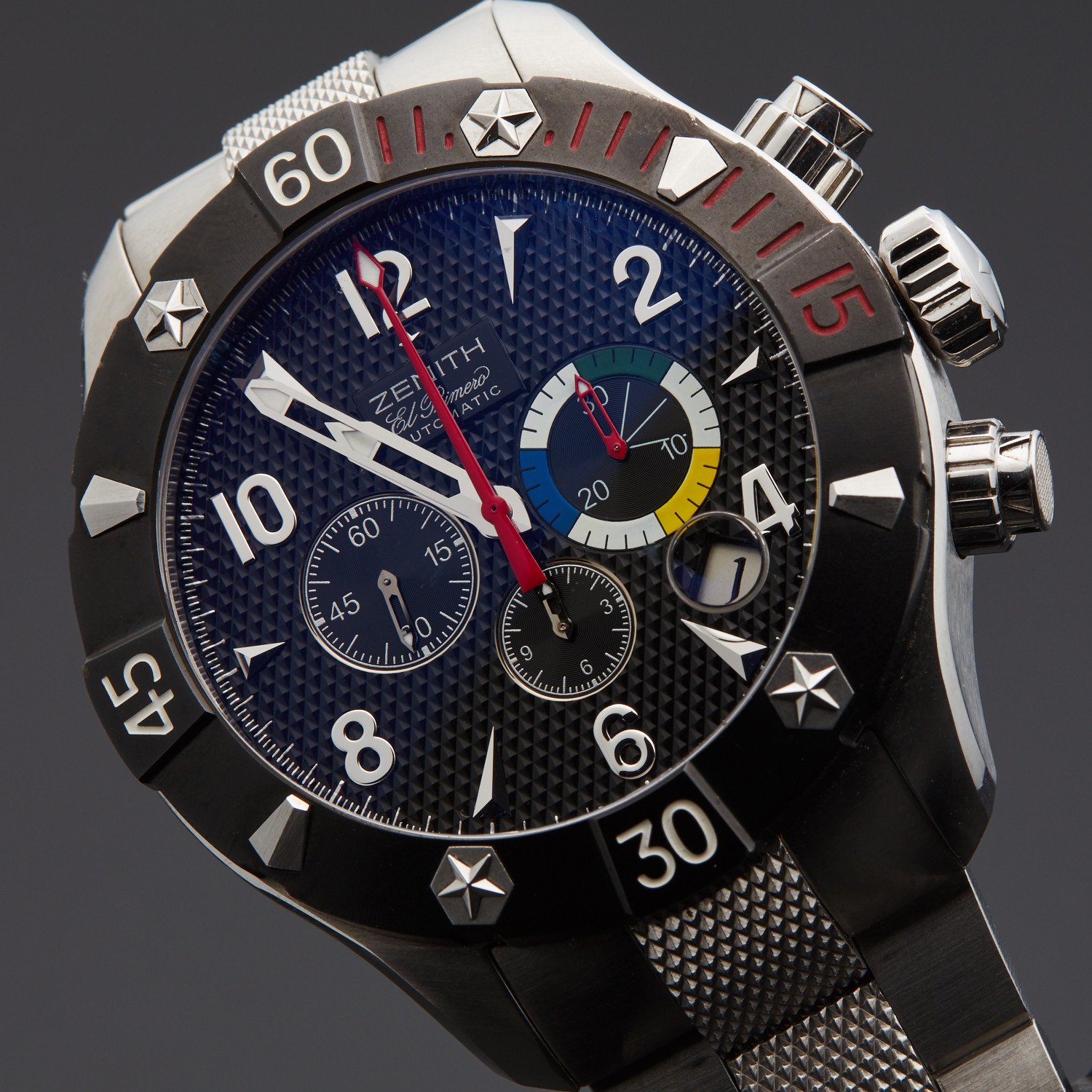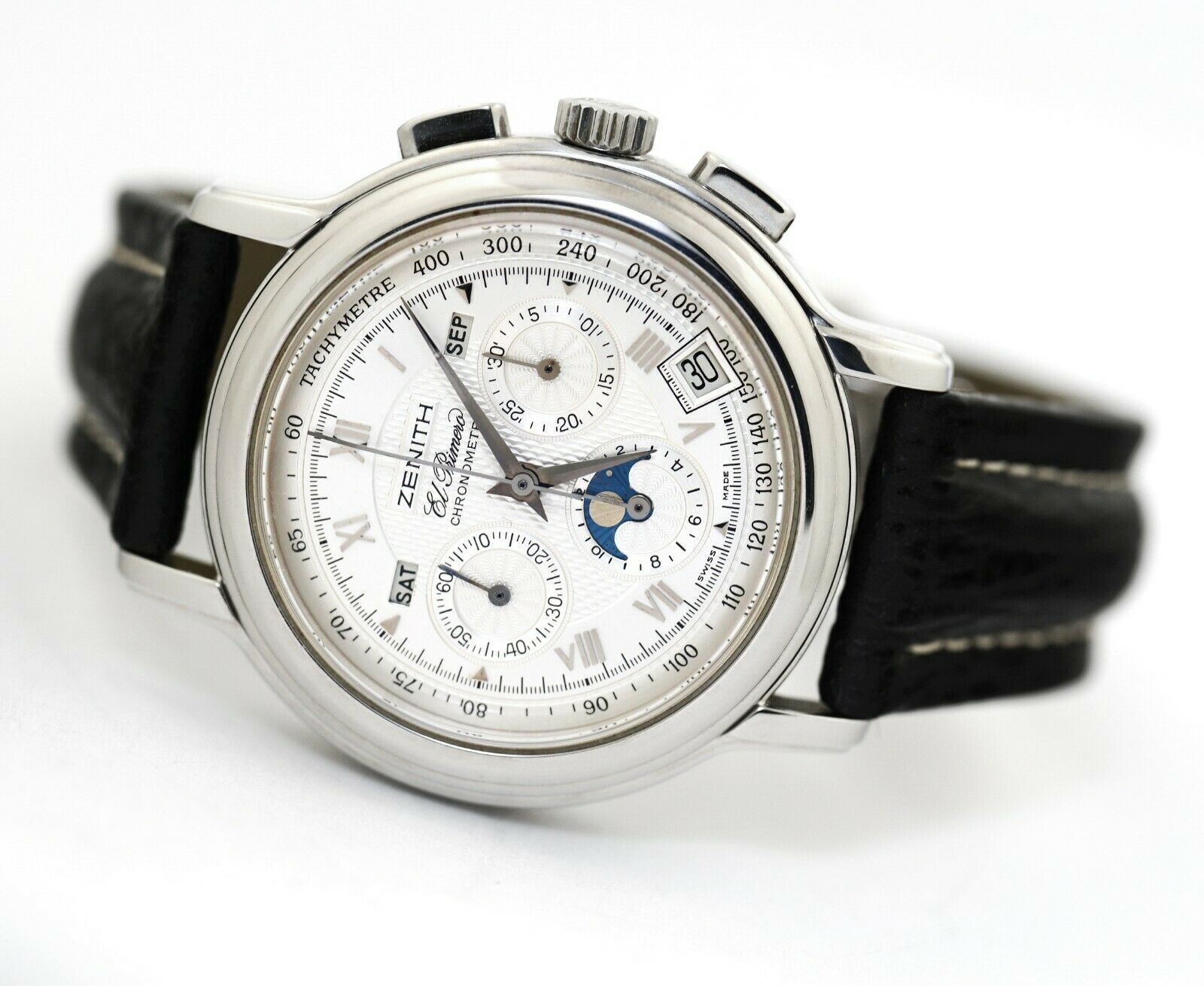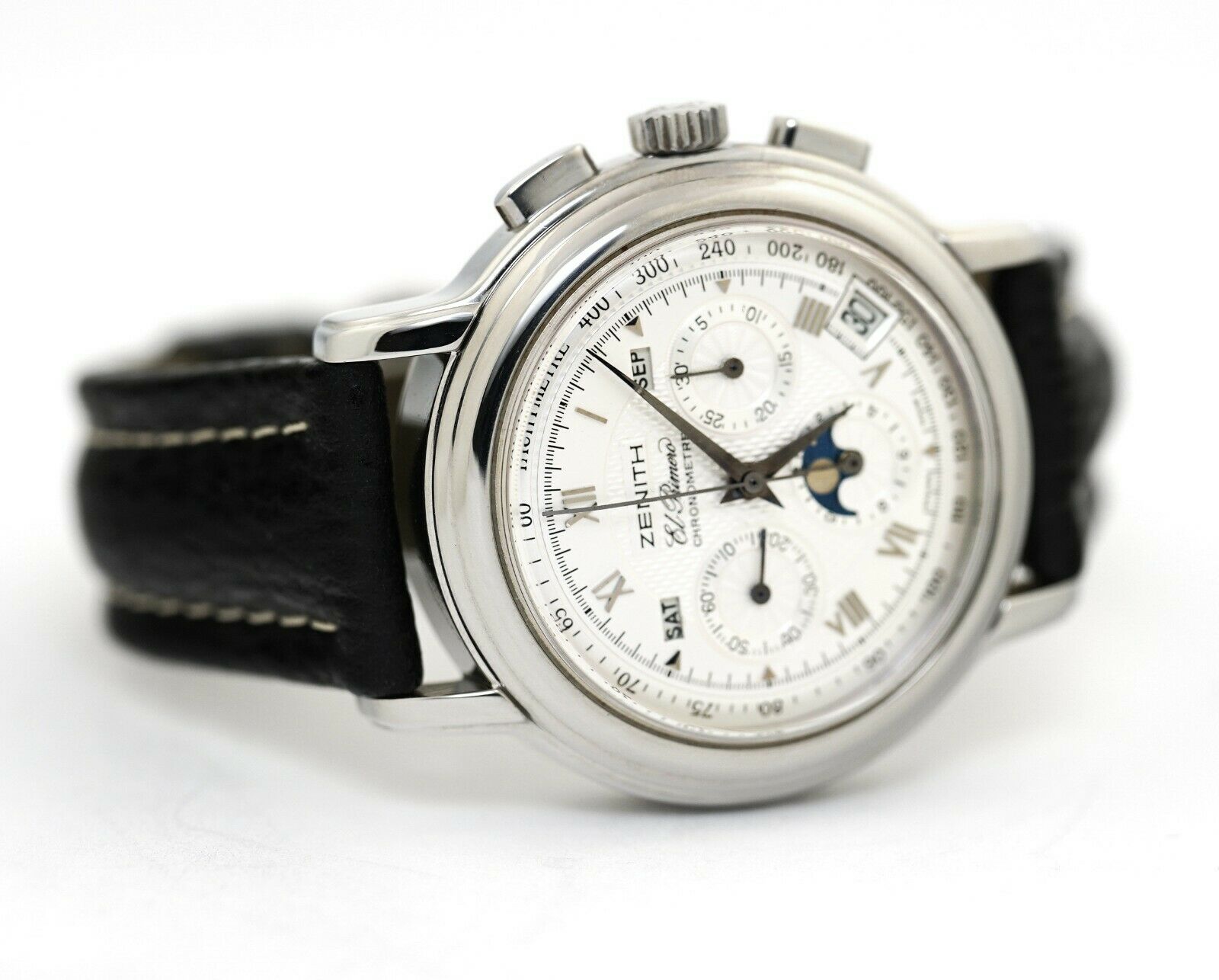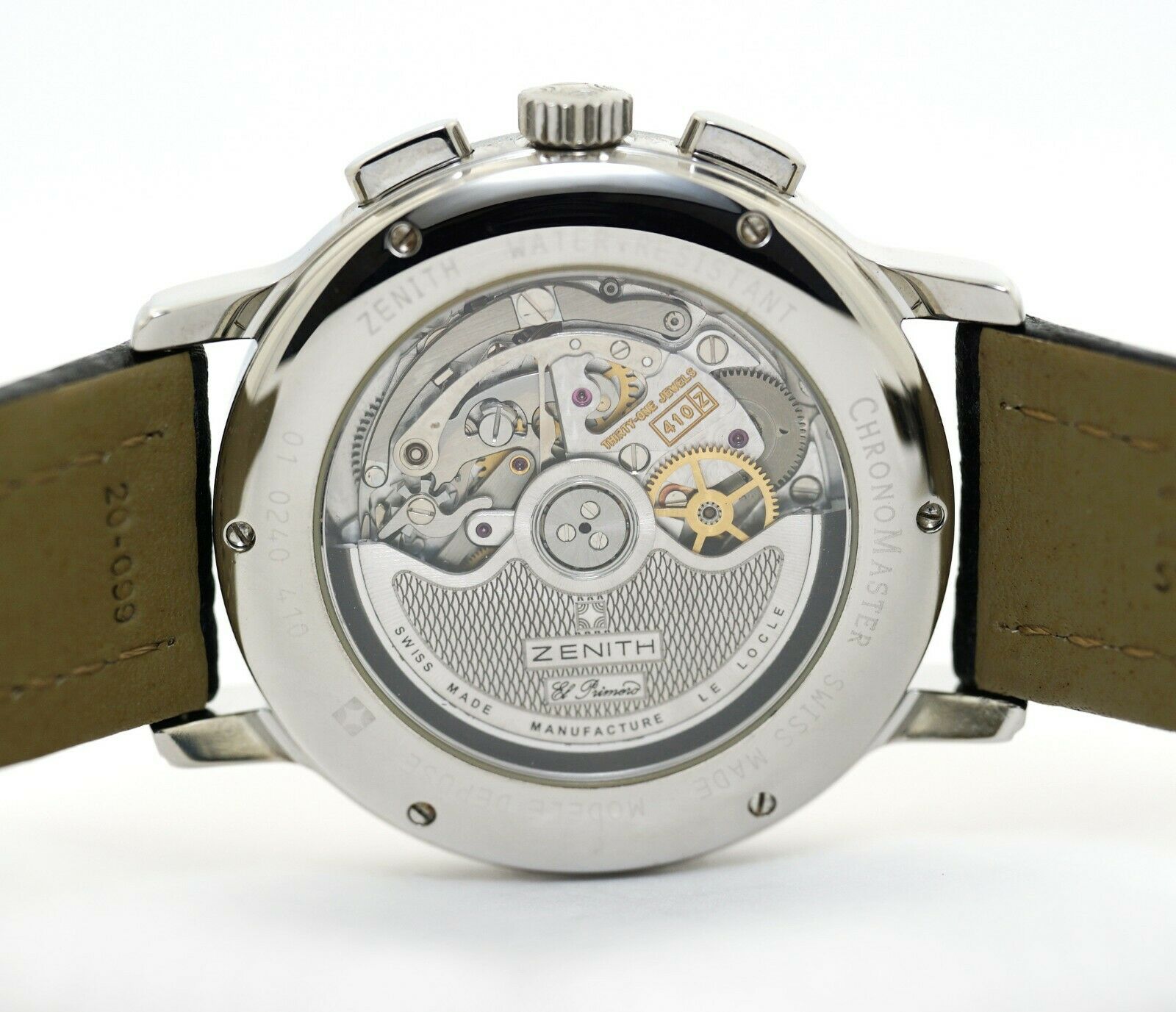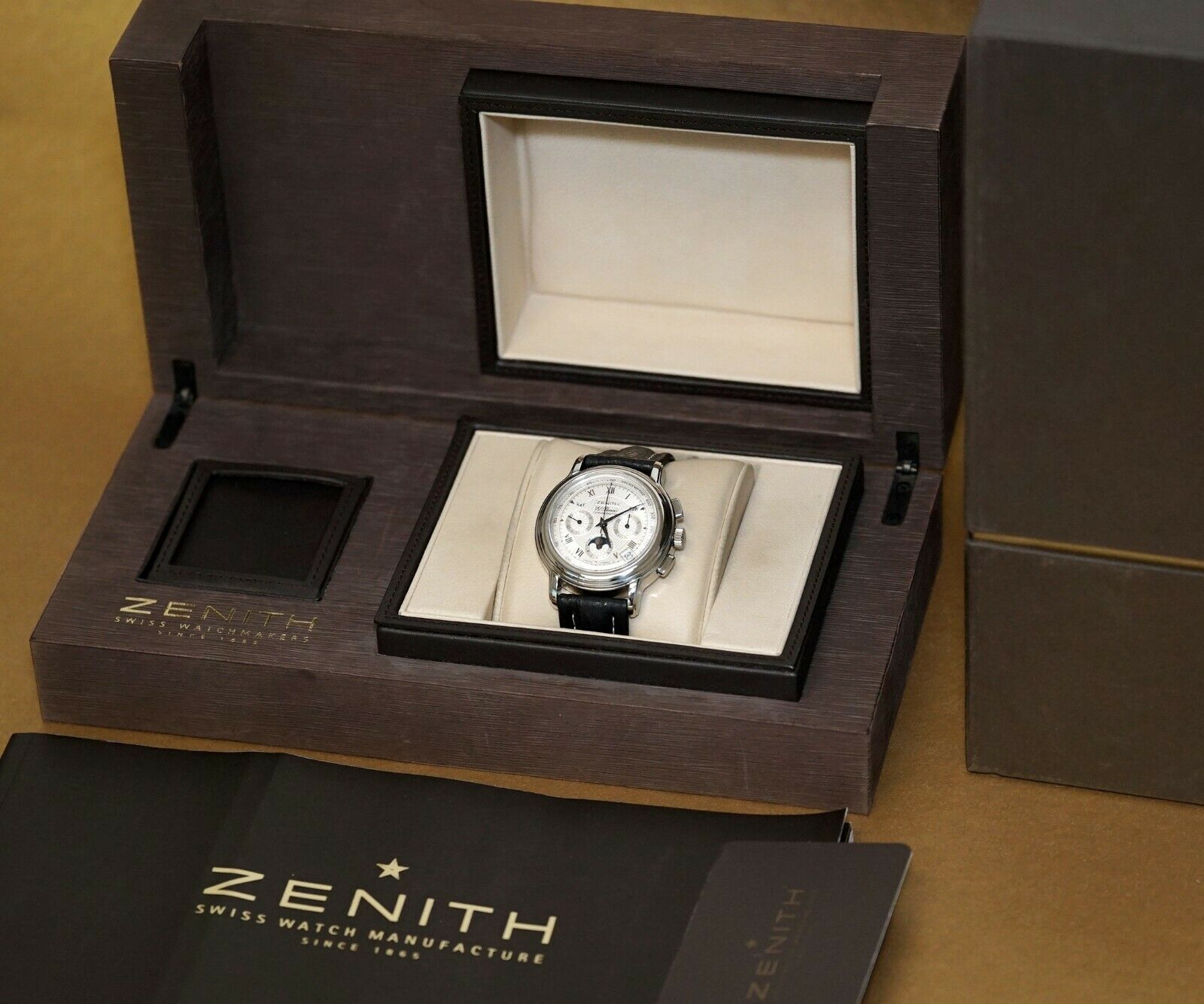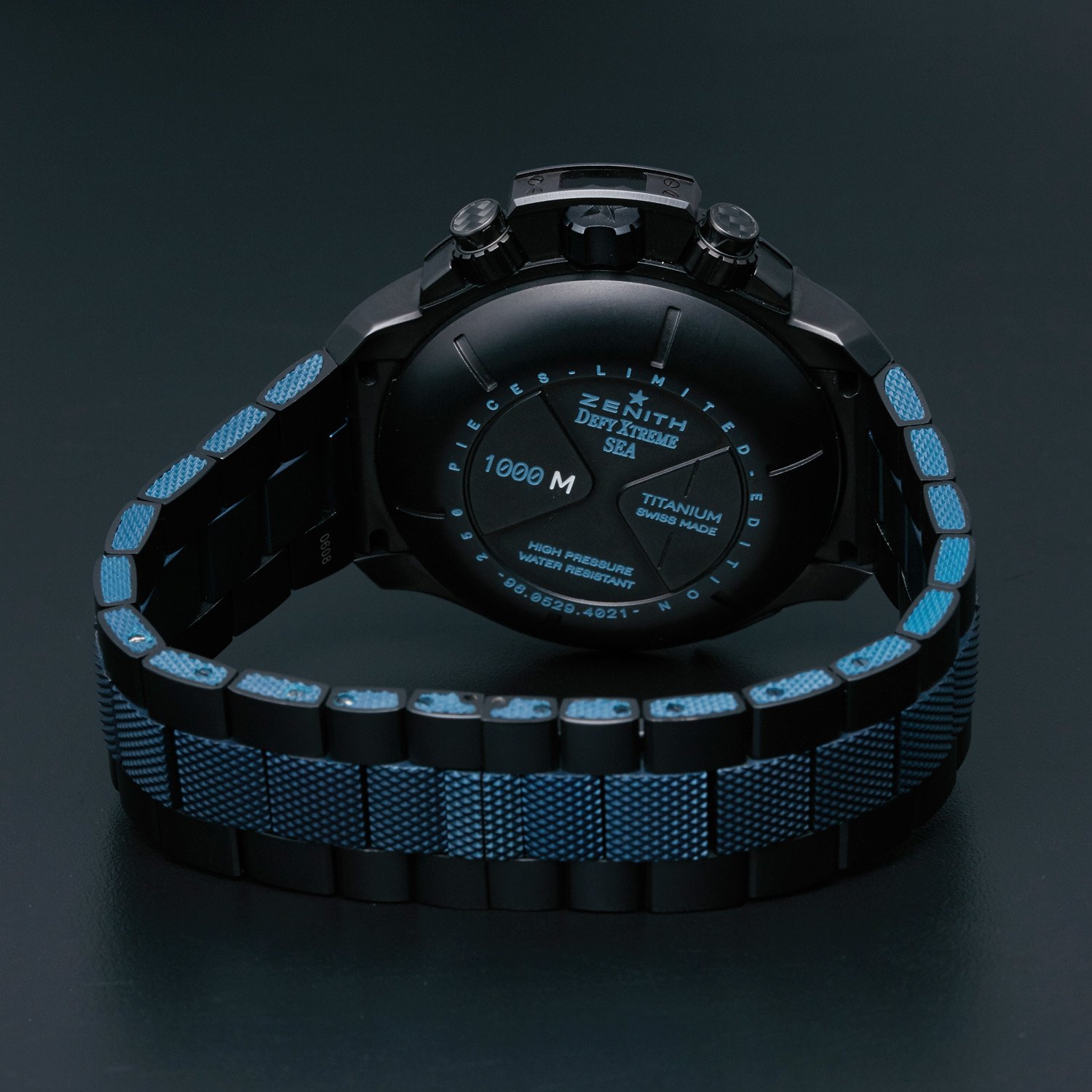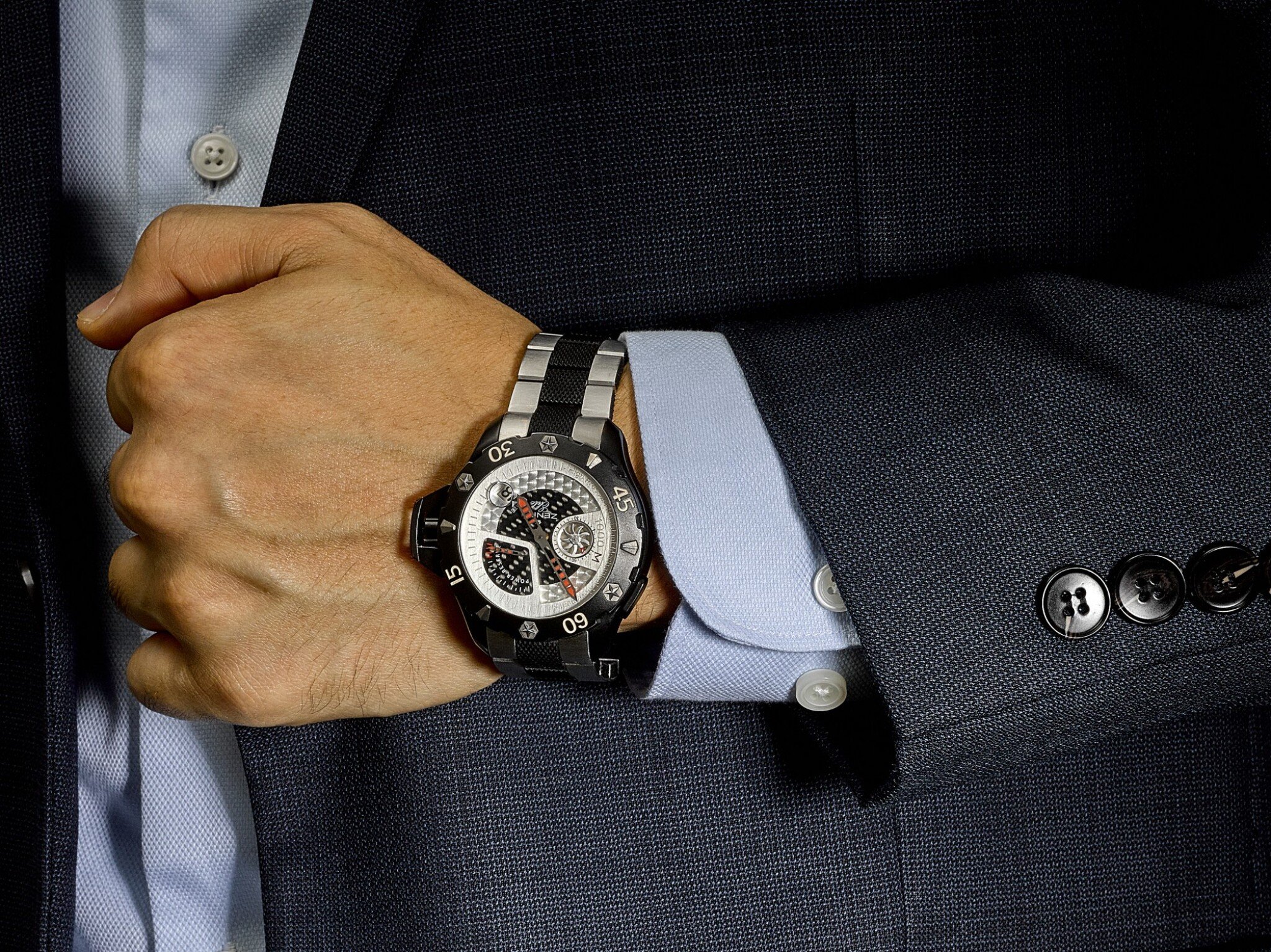Buying Guide: The Best Zenith Watches From The 2000s
We like to talk about vintage watches a lot within the Fratello team. Though most of what we write about is largely focused on the most recent releases and developments, for many of us, a lot of the fun can be found in the sometimes weird and often wonderful world of vintage watches. It’s a world full of history, remarkable watches, incredible stories, and quirky details. It inspired us to come up with a series of articles focusing on the best watches per decade from a select group of brands. Some of them are priceless, some of them are still affordable. In this installment, we will take a look at the best Zenith watches from the 2000s.
By the turn of the millennium, Switzerland had proudly reclaimed its title as the watchmaking capital of the world. The 2000s, in many ways, formed the blueprint for the watch industry as we know it today. By the time the 2000s came around, mechanical watches were incredibly popular. Instead of just selling instruments that told the time, the major brands became cornerstones in the world of luxury goods, and the watch industry was thriving.
We saw brands being bought by conglomerates that turned into the luxury powerhouses they are today. But the 2000s was also the decade that saw the rise of independent brands alongside the industry’s big players. Small brands made it their goal to push the envelope of watchmaking in terms of design and technological developments. In the early 2000s, we also saw watches increase in size like never before. Panerai, Audemars Piguet, Hublot, and IWC enjoyed a great rise in popularity with their oversized watches. They will all be part of the best watches of the 2000s.
Zenith in the 2000s
The 2000s for Zenith will forever be known as the Thierry Nataf era. The illustrious former Zenith CEO was in charge from 2001 until 2009 after LVMH bought Zenith in 1999. During his time at the helm, Nataf introduced new products and developed marketing stories that people still talk about 15-20 years later. The flamboyant CEO was always good for stories that created a lot of buzz around the brand. As a result, Nataf can be credited for bringing a new audience to Zenith. But whether this new audience was the right audience for the classic Swiss brand is highly debatable.
When it comes to product development, the 2000s for Zenith were some of the most questionable years. Nataf introduced huge oversized watches, flashy and open-worked dials, weird futuristic designs, and remarkable combinations of materials. Many of the watches introduced back then were niche products that were far removed from why people loved the brand so much. On top of that, many of the designs were just painful to see because they were simply not pleasing to the eye. It led to a steep decline in sales and an economic crisis on top of that resulted in Nataf leaving the company in 2009. There are stories that Nataf single-handedly brought Zenith to the brink of ruin.
Luckily, it didn’t go that far. Looking back, is it possible to find five worthwhile watches from those days? Then again, it wouldn’t really be fair to leave some of the weird creations from the Nataf era off of this list. After all, we are searching for the most remarkable watches from the brand in the 2000s, so let’s jump in and see what Zenith watches were released in the Nataf years.
The Entry Point — Zenith Grande Class El Primero ref. 03.0520.4002
The first watch on this list came with a story from the early 2000s when Fratello’s own Robert-Jan and I lived in the same house. I remember quite vividly that Robert-Jan handed me a copy of the German watch magazine Uhren-Magazin. In this specific issue of the magazine, a test featured this Zenith Grande Class El Primero ref. 03.0520.4002 and the IWC Portugieser Chronograph ref. 3714. In proud German tradition, these two watches were properly tested. And by properly tested, I mean that they were put through the wringer. Stats and graphs detailed everything from specs to accuracy to a great overall comparison that shed light on every detail.
Part of the testing involved checking out the movements. And the journalists had opened the cases on both watches to investigate the construction of the movements, see their finishing, and hook them up to their testing equipment. As I said, this was some thorough German testing. But Robert-Jan noticed something in the pictures of the movement of the IWC, and I think the people from Uhren-Magazin also mentioned it as well. The finish of the IWC caliber 79240 — essentially a Valjoux 7750 — was shockingly bad for a luxury watch of that price and stature.
A growing appreciation for the El Primero
I must admit that I have always loved the looks of the Portugieser. And I still do. I probably have even stated to Robert-Jan back in the early 2000s that I wanted to buy one. But after seeing that test, something changed in my perception of the watch. I never considered buying one again, and my focus shifted toward other watches. Now, I’m not saying that all Portugiesers suffered from poor finishing. This was just one watch out of the many that IWC produced — it is the most successful IWC model to date. But this one watch did influence my decision not to buy one. At the same time, this Zenith Grande Class El Primero ref. 03.0520.4002 was finished beautifully.
The watch featured a 44mm stainless steel case that is 14.8mm thick. It came with a large black dial featuring Arabic numerals for the even hours and arrowhead markers for the uneven hours. Visually, the two registers were too close to each other, in my book. But I loved seeing its automatic El Primero caliber 4002. The movement operates at 36,000vph and has 36 jewels and a 50-hour power reserve. It was too small for the case, resulting in a weird dial design. Another example of that is the placement of the date window. But what I loved was the construction and the finishing of the movement. It was after reading this issue of Uhren-Magazin that my appreciation for the El Primero movements took off, and it’s why this watch needed to be on this list. Today, you can get one roughly between €2K and €4K.
My choice — Zenith El Primero 1969 New Vintage ref. 03.1969.469
In 2009, Zenith celebrated the 40th anniversary of the El Primero movement with a string of limited-edition releases. It was one of the last rabbits that Thierry Nataf pulled from his hat before leaving Zenith. In good Nataf fashion, he created a collection of limited editions characterized by everything awful about most Zenith creations from that time. In short, the collection featured oversized limited-edition models from every Zenith collection of those days. They featured open-worked dials with this horrible 40th-anniversary branding on them, which was also (quite cornily) described as a “ray of energy”.
This awful design element was also to be featured on the modern re-issues based on the classic El Primero A384. Luckily, that didn’t happen, and the brand released three variations of the A384 that were well executed. All three watches featured the iconic A384 case, but it was larger at 40mm compared to the classic 37mm of the original. Looking at the images, you can see that 3mm definitely makes a difference in appearance. The first of the three watches was the stainless steel version and my pick for this list. The second was a rose gold version that still looks very classy. The third was a stealthy black titanium version with a transparent dial so that you can see the movement’s inner workings. All three featured big domed sapphire crystals, as you can see in the pictures.
A familiar design twist
As I mentioned, the design of the dial did come with a twist. The dial design of my stainless steel pick is based on the El Primero A386. The colors and overlapping registers are an iconic feature of the most popular of the original three El Primero models from 1969. But it wasn’t the first time that the design of the A384 and A386 was combined. Most people will know that Zenith produced the A3817 in the early 1970s, which was essentially an A384 with the dial design of the A386. The A3817 was re-issued last year, and I loved wearing that watch. To this day, it has me doubting whether my pick would be the A384 or the A3817 with its more vibrant dial. It’s something Nataf and his team also recognized.
The movement inside the watches was the Zenith El Primero caliber 469. Essentially, it is a renamed version of the El Primero caliber 400Z. This automatic chronograph movement operates at 36,000vph and has 36 jewels as well as a 50-hour power reserve. It features a date indication at four-thirty. Due to the bigger size, the date window is placed further from the perimeter of the dial than on the smaller original models. If you turn the watch around, you will see the nicely finished movement through the sapphire display case back. On the case back itself, you will also find a white printed seal to commemorate the 40th anniversary of the El Primero. The stainless steel Zenith El Primero 1969 New Vintage ref. 03.1969.469 was produced in a limited run of 500 pieces. It makes them tricky to find, but it’s not impossible. When you do find one, expect to pay in the mid-€6K range.
Money is no object #1 — Zenith Defy Xtreme Line
My next pick is not just a watch; it’s an entire line of watches. Most people will remember Thierry Nataf by the Zenith Defy Xtreme line. Zenith introduced the new Defy collection at Baselworld 2006. It consisted of both the Defy Xtreme and Defy Classic lines. The remarkable thing about that Defy collection is that you will recognize them from a mile away. Even the Defy Classic models are easily recognizable, as they were essentially toned-down versions of the Defy Xtreme models. But they still featured huge 46.5mm cases and open-worked dials to make them stand out. There was nothing classic about them. But in all honesty, the Defy Xtreme is where it’s at. The many models bring a huge smile to my face, looking back at it. Let’s zoom in a bit to remind ourselves of the horror.
The Defy Xtreme was the brand’s line of extreme sports watches available from 2006 until 2009. Zenith invested a lot of money in bringing the Defy line to life. The company invested in new materials, new movements, and new cases. Zenith created the entire collection from scratch. You would find the Xtreme, Elite, Stealth, and Sea ranges within the Defy Xtreme line. The Xtreme, Elite, and Sea ranges featured four models with four different movements — Open, Chronograph, Power-Reserve, and Tourbillon. The Stealth range only featured two models with the Open and the Grande Date.
Brilliant materials and brilliant movements
When you look at all the different models, there is a lot to take in. But all of the Defy Xtreme models featured oversized 46.5mm cases that were water-resistant to 1,000 meters. The interesting thing about the cases and bracelets is that Zenith used several materials that have become more common over time, like titanium, kevlar, carbon fiber, and a proprietary material called Zenthium. Zenthium was an alloy three times harder than steel and combined titanium for strength, aluminum for lightness, and niobium for shape memory. The Defy Xtreme Elite models featured a combination of modern materials and gold. So if you are looking for something classy, that is the way forward. While I say this with a sense of irony, the black-and-gold combination looks good. Too bad the watches don’t.
One special model took the Xtreme concept to the max, and that was the Defy Xtreme Tourbillon Zero-G. It featured a very special movement fitted with a unique gyroscopic system that ensured perfect horizontal positioning of its regulating organ while maintaining 1,000 meters of water resistance. Like most Zenith watches at the time, the Defy Xtreme models were all limited editions Did all of them sell? Who knows? We can say that the level of watchmaking and the overall level of detail and quality of these watches was quite exceptional. But that doesn’t make up for the grotesque looks of the Defy Xtreme line. You can usually find these watches for a fraction of their original price, as they have become a symbol for everything that was wrong with loud, oversized watches in the early 2000s.
Money is no object #2 — Zenith Defy Classic Chrono Aero ref. 03.0526.4000
OK, I admit, it’s another Defy model. But I picked this one because it is the spiritual successor to the El Primero Rainbow Fly-Back Chronograph that was my pick for the best Zenith watches of the 1990s. It’s the watch that many of us here at Fratello love. Lex wrote a great in-depth article about the watch and why Zenith should bring it back. And coming from that iconic model, this Zenith Defy Classic Chrono Aero ref. 03.0526.4000 continued the same colorful aesthetic. The watch came with either a black or white dial (ref. 03.0516.4000). I prefer the black-dial version because it has a bit more contrast with the other colors. On top of that, you will see them with the regular stainless steel bracelet, leather strap, or with a black rubber strap with the same design.
The watch features a huge 46.5mm stainless steel case that is 17.1mm high. As a result, this watch is only for bigger wrists. I like the design though, despite its huge size, as well as the visual balance that it keeps. The black PVD-coated bezel and the dial are perfectly balanced. Furthermore, the dial layout is pretty straightforward, so the watch is easy to read. That is enhanced by the skeletonized hour and minute hand. I like that the dial has a technical structure that gives it a rugged finish that fits the watch. As with all the big Zenith models, you will see that the date window is placed fairly far inwards. But the addition of a date magnifier does a little magic trick because that feature almost makes you forget the date window placement.
A modern El Primero movement
Inside the 46.5mm case, Zenith equipped the watch with the caliber 4000SC. It’s a modernized version of the famous El Primero 400. The movement came equipped with a ball-bearing rotor made from full tungsten with a guilloche pattern. Additionally, the brand used the aforementioned proprietary Zenthium alloy to strengthen the chronograph bridge and balance. The 36,000vph automatic movement has 278 components, 31 jewels, and a power reserve of 50 hours. The chronograph features a 30-minute counter at 3 o’clock and a smaller 12-hour counter at 6 o’clock. The register at 9 o’clock displays the small seconds.
As mentioned, the design looks similar to the El Primero Rainbow Flyback model. It features a bezel with the first 15 minutes in red, whereas the original had red markings for the first 20 minutes. There’s also the green, blue, and yellow 30-minute counter at 3 o’clock with its red hand, as well as the bright red central chronograph hand. It’s an aesthetic that I immediately connect to Zenith and it’s why I like seeing this watch. At 46.5mm, this will never be a popular watch though. But what you will get is a friendly and respectful nod to the original El Primero Rainbow Flyback. And that is not something Nataf was particularly known for, so we’ll cherish that. Nowadays, the Zenith Defy Classic ref. 03.0526.4000 goes for prices between €3.5K and €4K. For what you get in return in terms of quality and movement, it’s a great buy. If only it weren’t so ridiculously big.
Money is no object #3 — Zenith Chronomaster Triple Date Moonphase ref. 01.0240.410
This brings us to the last watch on this list. Was there absolutely no watch that was a little more sophisticated and smaller, reminding us of the great Zenith brand of the past? There was! The Zenith Chronomaster Triple Date Moonphase is an iconic watch from the brand that is famous amongst collectors. During the 2000s, Zenith kept that watch in the collection as one of the few models that represented the classic Zenith aesthetic. Compared to the earlier models from the nineties, the later models featured dials with a guilloche pattern. It made the dials more interesting and refined in my opinion.
The watch came with a 40mm stainless steel case that is classical in its appearance. It’s a well-known and respected design in enthusiast circles, featuring a sapphire crystal on the front and a sapphire crystal case back so you could check out the great movement. Zenith’s choice for the movement of the watch was the El Primero caliber 410Z. Zenith introduced this updated caliber in 1999 as an evolution of the caliber 410. It is Zenith’s famous El Primero chronograph movement with added day, date, month, and moonphase functions. The date window is located at four-thirty, as with most El Primero models. The day and month indicators are at 10 and 2 o’clock, respectively. The register at 6 o’clock holds the moon phase indicator. Overall, if you look at the dial design, you will see that it’s quite legible despite its complexity.
The iconic El Primero Caliber 410Z
The movement operates at 36,000vph and has 31 jewels with a power reserve of 50 hours. Another thing that stands out is that the date window is finally positioned in a normal spot compared to the other (much) bigger watches on this list. Although, seeing it cut off the numbers of the tachymeter scale is not necessarily the best design feature. But the simple fact that the proportions are normal is a breath of fresh air. Seeing this watch is like landing back on Earth after having spent a full day writing this article in the twilight zone. It’s a fun experience, but only for a short amount of time.
Finding one of the Zenith Chronomaster Triple Date Moonphase ref. 01.0240.410 watches is not that hard. But finding one from the later 2000s is tougher. But there is no real reason to find that specific one unless you like the more refined guilloché dial. Technically, the models from the late ’90s and early ’00s are the same. The watch came with either a white or a black dial, and I have to say, while the white dial is the classic silhouette that most people will know, the black dial definitely looks incredibly classy as well. If you want to find one of these Zenith Chronomaster Triple Date Moonphase watches, expect to pay between €3.5K and €5.5K. Considering what you get for the money, that’s a bargain.
Final thoughts
There you have it. A list of five remarkable Zenith watches from the 2000s. It perfectly shows the legacy of the illustrious Thierry Nataf. Looking back at it reminded me of some of the horrible designs. But Nataf did introduce new materials and respected the brand’s tradition in creating outstanding movements. Nevertheless, as stated before, his tenure at Zenith wasn’t a commercial success. As a result, the Zenith brand needed to be saved from becoming a ghost from the past. It’s the task that was accepted by Jean-Frederic Dufour, who was the opposite of Nataf in terms of personality and vision for the brand. After his stint at Zenith, Dufour went on to become the CEO of Rolex.
As with all the other brands, it is important to do your homework. The world of vintage Zenith watches also suffers from fake or Franken pieces. Next, you have to remember that many vintage pieces were serviced over the decades, and parts have been replaced. That’s why it is good to do some required reading.
A lot of crucial historical info has been documented, though. Two nice books to start with are Zenith — Swiss Watch Manufacture Since 1865 and El Primero — Der Chronograph (in German) written by Manfred Rössler. On top of that, there is plenty of information available to read online. Jeff Stein’s On The Dash has a great cheat sheet for all the El Primero models with some nice links. Additionally, the Zenith forum at Watchuseek is also a great place to start. Contacting vintage experts will also help out greatly. It’s a great way to learn more about a watch and get to know some amazing people along the way.
Let us know in the comment section what your favorite Zenith from the 2000s is. Did I miss a beautiful model? Let us know! We’ll be back for another installment in the series next Saturday.

